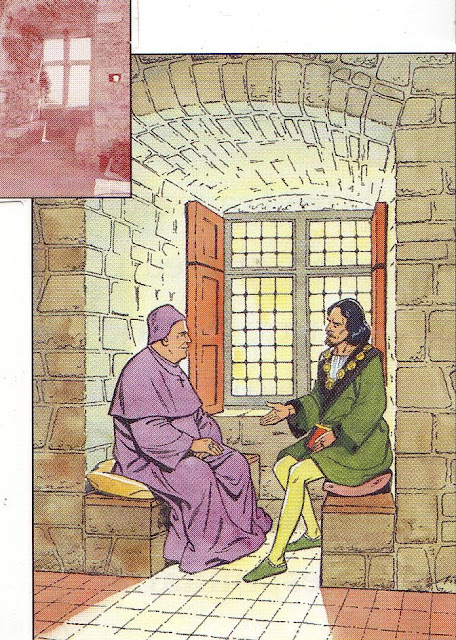Château of Roquebrune - the Fort
From the end of the XVth century the Grimaldis attempted to increase the donjon's military power by digging out large, wide artillery loopholes in the thick walls. however, they soon had to face reality: the battery of cannon that could be placed in a semi-circle on the rock face dominating the north side of the fortress, deprived it of its ancent invulnerability. You can these loopholes, from the outside, in THIS PHOTOGRAPH.
Below you see one of the channels cut into the walls. Cannon was rolled down these channels onto the invaders below. You can see one of these (not the one I photographed) on the extreme right and in the part of the photo flooded with sunlight.
Tomorrow, we'll enter the donjon.


















































